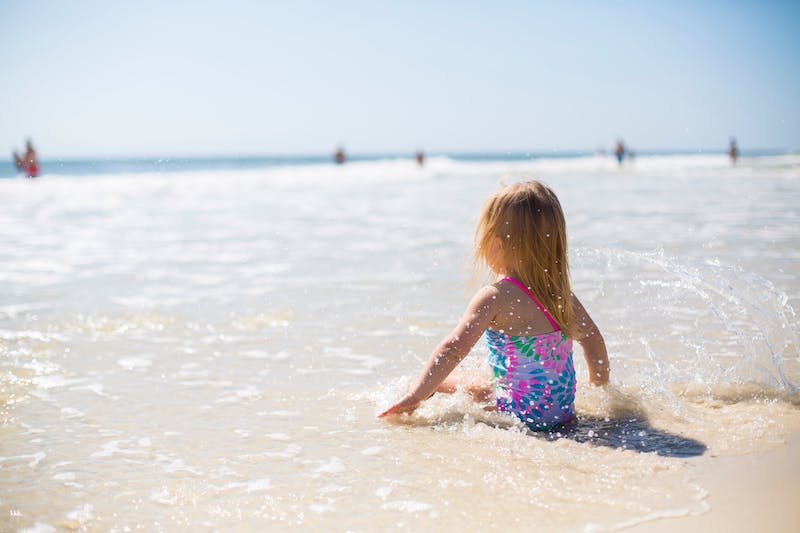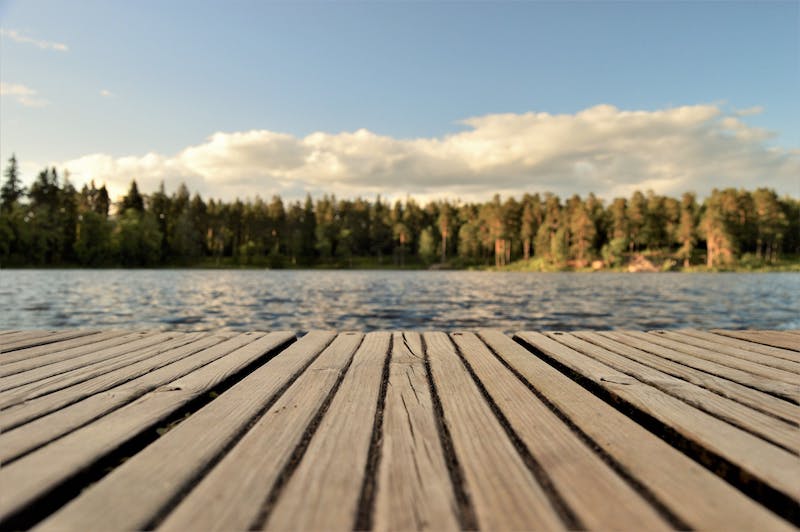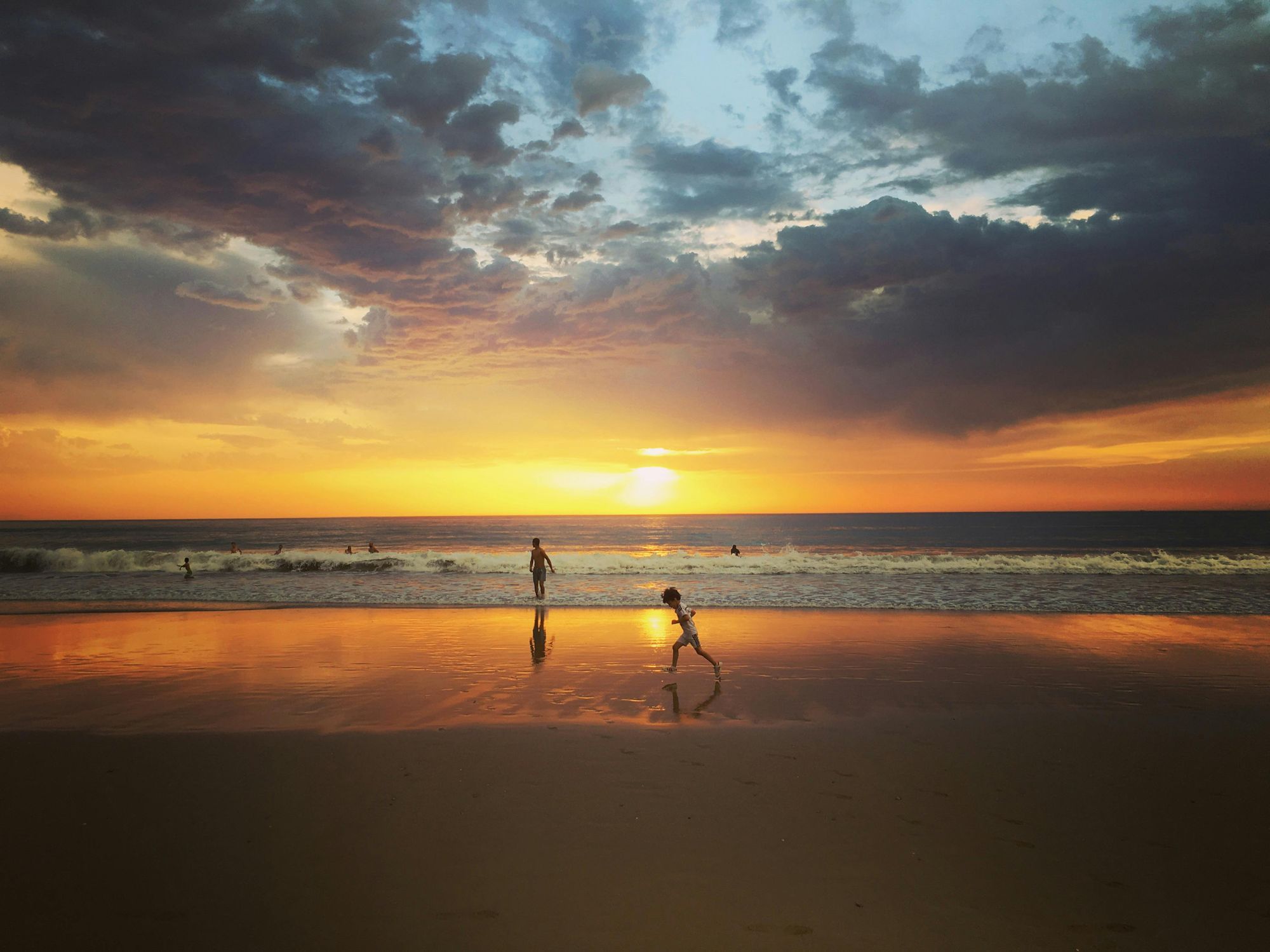Open Water Safety Tips for Kids
Guide to Open Water Swimming Safety
When it comes to family vacations, beaches, rivers, and lakes are some of the best destinations, and a great place to practice swimming skills. Everybody enjoys a little fun in the sun, but swimming in open water can come with some dangerous challenges, especially for younger, less experienced swimmers.

Knowing the Dangers of Open Water Swimming:
Swimming at the beach or lake is always a great time, but it is critical to know the risks before your children jump in, especially if there is no lifeguard on duty. The major factors that often contribute to drowning in open water include:
1. Fatigue – Swimming in open water is much more difficult because it requires lots of energy. Ocean currents, undertow, and passing boats generate powerful currents, requiring swimmers to increase their effort to be able to navigate through these successfully.
2. Injury Risk – Floating objects, watercraft, aquatic life, and even other swimmers can present injury opportunities. More traffic in the water means more obstacles to maneuver, and any injury can present major challenges while swimming in open bodies of water.

3. Cold Water – Open water is typically colder than a swimming pool, which can result in potential dangers such as hypothermia, shock, or muscle cramps. Swimmers must make an extra effort to stay warm, demanding higher levels of energy.
4. Infection – Many lakes and ponds can carry harmful bacteria that can make the swimmer sick, especially if they have open wounds that water can penetrate. Before getting into the water, it is important to confirm that water quality is safe for swimming.
Important Open Water Safety Tips:
1. Check the Water Temperature & Quality – Before any of your children step foot in the water, make sure an adult goes first to confirm it is a safe temperature. Sometimes, wetsuits are recommended to stay warm and safe from hypothermia. Additionally, make sure you ask locals and check designated websites/board postings about any hazards to the water quality. Some open bodies of water are regularly tested to ensure the safety of swimmers and boaters.

2. Have an Emergency Plan – Make sure that your family and all swimmers have a plan in case of an emergency. This means addressing all possibilities if something goes wrong. Make sure everyone knows where to go and what to do as part of the safety tips for open water swimming. It’s also important to ensure there is more than one safe and accessible exit point from the water and that everyone knows where these are.
3. Swim in a Designated Swim Area – The ocean is full of rocks, marine life and coral, among other potential threats that are extremely dangerous for swimmers so it's important to stay in designated safe areas. To ensure the safety and comfort of little feet, using water socks is a great idea as they provide protection without taking the fun out of swimming. Always be mindful of where you are on the beach and if the water is a designated swim zone.

4. Never Swim Alone – Stick to the buddy system and have a designated meetup spot if you get separated. Children should never be left alone near the water even if there is a lifeguard on duty, so it's important to assign a water watcher who will watch them at all times. The water watcher should avoid distractions and notify other responsible adults before leaving. We recommend using a water watcher card to define their responsibility. Additionally, when the current water watcher takes a break, the card should be passed to another capable adult to fulfill the role.
5. Riptides and Undertow – Ocean beaches and large lakes usually have strong and powerful currents. One of the most important beach swimming safety tips is to be aware of rip currents. These rip currents are difficult to see and impossible to predict. Teaching your children about the existence of these currents and what they are would help them understand the dangers of open water. Before you visit a beach with your family, seek information related to currents in the area to be aware of their presence and what zones to avoid.

6. When in Doubt, Get Out – It’s very important to trust your instincts when swimming in open bodies of water. If something doesn’t feel right, your body isn’t responding well to the water, or you get tired, get out of the water! The same should go for your children as well – make sure that you’re constantly checking in with any younger swimmers to ensure that they still feel good, safe and comfortable.
Taking your family to the beach or lakefront is always a great time. Just remember that there are responsibilities that come with these visits. Don’t rush your children into the water, and most importantly, make sure they are ready. At Big Blue Swim School, we teach swim programs for kids of all ages and skill levels. So, if you want your child to be fully prepared for the big waves, find a Big Blue location near you!